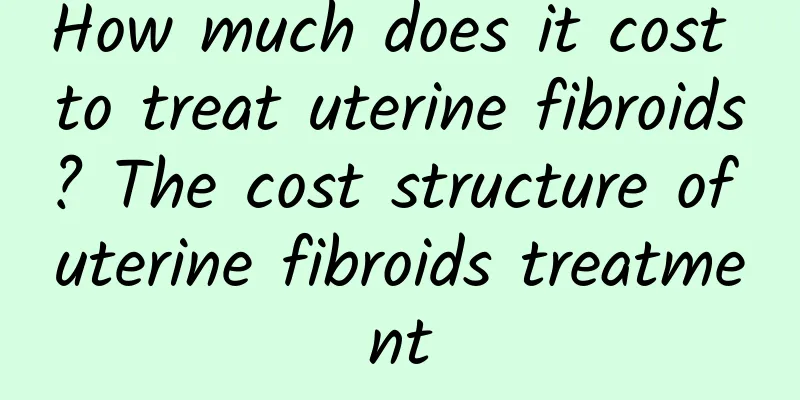Treatment of vulvar Bartholinitis

|
Prevention of Bartholinitis Infection often occurs on one side. The pathogen first invades the gland duct, causing the duct opening to become red, swollen, and blocked. The inflammation develops deep into the gland, causing an inflammatory mass to form throughout the gland, causing local redness, swelling, heat, and pain; if the gland is infected and purulent, the duct opening is blocked, and the pus cannot flow out, it becomes a Bartholin's gland abscess. Below, the editor will introduce to you the treatment of Bartholinitis. 1. Basic treatment During the acute phase, patients should rest in bed, keep the vulva clean, and receive systemic antibiotic treatment. Drug sensitivity tests can be performed to guide the effects of antibiotics, and traditional Chinese medicine for clearing away heat and detoxification can also be given. Ostomy is feasible if abscesses are formed. 2. Local treatment The vulva should be kept clean and hygienic. Infrared and microwave therapy can be used at the same time. You can also choose Chinese medicine for clearing heat and detoxifying, such as 10g of dandelion, 10g of Viola yedoensis, 10g of honeysuckle, and 10g of Forsythia suspensa. Apply the decoction for local hot compress twice a day, or sit bath with 1:5000 potassium permanganate solution twice a day. 3. Systemic treatment Because the pathogens are mostly mixed infections of aerobic bacteria, anaerobic bacteria and chlamydia, broad-spectrum antibacterial drugs or combined drugs are often used, such as: ① Cephalexin or cephradine 0.5g, twice a day, orally; ② Levofloxacin tablets 0.1g, 2-3 times a day, orally; ③ Gentamycin injection 80,000U, twice a day, intramuscular injection; ④ Penicillin 800,000U, twice a day, intramuscular injection, and metronidazole 0.2-0.4g, twice a day, orally. It can also be selected according to the results of drug sensitivity test. Those with mild condition can take it orally, and those with severe condition should be given intravenous medication to promote the absorption of inflammation and improve symptoms. 4. Incision, drainage and ostomy When an abscess is formed, it should be immediately incised and drained and ostomy should be performed. This is because simple drainage can only temporarily relieve symptoms, and inflammation may recur after the incision is closed, or an abscess may form in the future. If conditions are unavailable, pus can be drained by puncture and 200,000 to 400,000 U of penicillin can be injected. |
<<: What are the treatments for Bartholinitis?
>>: What are the methods of traditional Chinese medicine for treating female Bartholinitis?
Recommend
What are the early symptoms of uterine fibroids? What are the symptoms of uterine fibroids?
Uterine fibroids are a common benign tumor in the...
What surgery do women do to treat cervical erosion? What is the best treatment for cervical erosion in women?
Under normal circumstances, the treatment of cerv...
6 principles for monitoring blood sugar to avoid metabolic syndrome
During the Spring Festival holiday, diabetics or ...
How long does it take to recover from hysteroscopic surgery for endometrial polyps?
The recovery time after hysteroscopic surgery for...
What are cervical warts?
I don't know if you know much about cervical ...
If you want to lose weight effectively and long-term, choose the Mediterranean diet!
Considering your health in the second half of you...
Women should avoid making chronic vaginitis symptoms worse
In recent gynecological examinations, many expert...
Combined with the causes of cervical hypertrophy to do a good job of prevention
If women want to avoid the trouble of cervical hy...
Superfood avocado "oil" trap! How to make dietary substitutions without gaining weight?
In recent years, avocado has been hailed as a &qu...
Can almonds cause miscarriage? What dietary taboos do pregnant women need to pay attention to?
Almonds are rich in nutritional value. The VE con...
What causes recurrence of adnexitis?
What is the cause of recurrence of adnexitis? Fai...
What is pelvic inflammatory disease in traditional Chinese medicine? Which acupoints can be massaged to treat pelvic inflammatory disease?
What is pelvic inflammatory disease in traditiona...
Can I drink motherwort granules during menstruation?
You can drink Motherwort granules during menstrua...
Brief analysis of the symptoms of vulvar leukoplakia
As a common gynecological disease, vulvar leukopl...
What are the ways to avoid threatened miscarriage?
Threatened abortion is a common gynecological dis...









